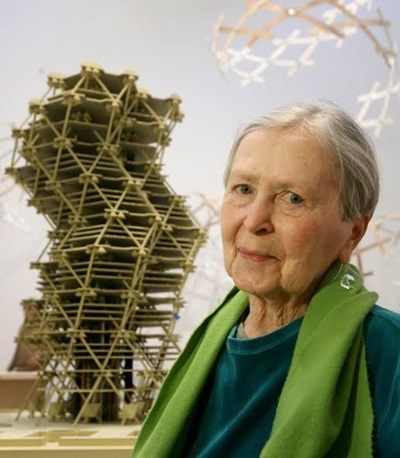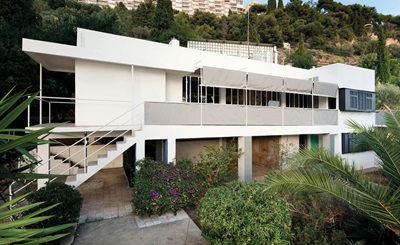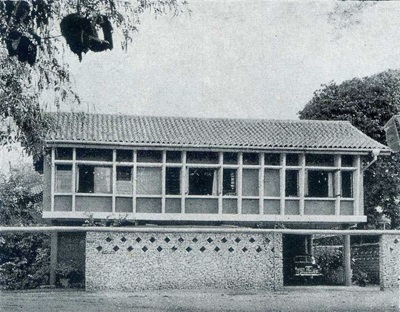Written by: Saram Maqbool
Posted on: May 28, 2025 |  | 中文
| 中文
Hearst Castle by Julia Morgan
Like many major industries, architecture has been largely dominated by men throughout history, not for a lack of women contributing to the field of design, but rather because their efforts were simply pushed into the shadows. While figures like Zaha Hadid and Denise Scott Brown have rightly achieved international recognition, many other talented women have made substantial contributions to architecture only to be overlooked by history. These forgotten female architects defied social norms, broke gender barriers and helped shape the cities we live in today.
One of the first licensed female architects in the world and a key figure in the Prairie School of Architecture, Marion Mahony Griffin graduated from MIT in 1894 and became the first woman employed by Frank Lloyd Wright. Mahony created many of the detailed, nature-inspired renderings that became iconic representations of Wright’s work, though she rarely received credit. After marrying architect Walter Burley Griffin, she collaborated with him on the winning design for Canberra, the capital city of Australia. Her contributions to urban planning and landscape architecture were visionary, yet history often remembers her primarily in the shadow of her husband. Marion's talent as a draftsman, designer and urban planner places her among the greats, and modern scholars are only now beginning to reevaluate her legacy.
Eileen Gray was another architect whose architectural accomplishments were overlooked until recently. Known as a furniture designer, Gray was also a modernist who designed the famous house E-1027 on the French Riviera, a project that predated many of Le Corbusier’s works. Tragically, her work was later overshadowed when Le Corbusier painted murals on the walls of E-1027, an act many viewed as both intrusive and symbolic of male dominance in the field. Gray's attention to spatial flow, human comfort and minimalist elegance influenced a generation of designers and architects, even if unacknowledged at the time.
Julia Morgan was the first woman to earn an architecture degree from the prestigious École des Beaux-Arts in Paris and the first licensed female architect in California. Over her career, she designed more than 700 buildings, ranging from churches and schools to private estates. Her most famous project is Hearst Castle in San Simeon, a sprawling estate commissioned by publishing tycoon William Randolph Hearst. Morgan’s engineering excellence, aesthetic sensibility and dedication to craftsmanship made her a standout in a male-dominated profession. Despite the grandeur and impact of her work, she was largely overlooked by architectural historians until recent decades.
Anyone and everyone familiar with modern architecture should know of Le Corbusier. However, one of the most significant contributors to the furniture and interior design of his famous projects was forgotten until recently. Charlotte Perriand worked very closely with Corbusier, bringing a humanist touch to his stark functionalism. She later focused on housing, public architecture and the integration of architecture with nature. Perriand’s work in post-war Japan and the French Alps shows a profound understanding of materials, context and cultural integration. Her legacy is now being reclaimed, but she still remains under-recognized.
Italian-born Lina Bo Bardi became one of Brazil’s most important modern architects after emigrating in the 1940s. Her design for the São Paulo Museum of Art (MASP), suspended on concrete stilts to create a public plaza beneath, is considered a masterpiece of modern architecture. She blended European modernism with Brazilian vernacular styles, embracing social functionality, raw materials and communal spaces. Bo Bardi has had a lasting influence on Latin American architecture, and it’s a shame that she wasn’t widely recognized during her lifetime. Even now, she isn’t known to the general public, but her visionary ideas live on.
Moving away from the West, we have Minnette de Silva, a trailblazing Sri Lankan architect whose purpose was to blend modernist ideas with Sri Lankan forms and materials. De Silva became the first Asian woman to become an associate of the Royal Institute of British Architects and the first female architect in her country. Her work reflected a unique fusion of Bauhaus principles with South Asian aesthetics, focusing on community living, local craftsmanship and sustainable materials. Despite her innovative approach, her contributions were often dismissed due to her gender and location outside the West.
These women are just a few of all those who gave their hearts and souls to the field of architecture. Names like Jane Drew, who played a major role in designing the city of Chandigarh alongside Maxwell Fry and Le Corbusier, and Anne Tyng, who collaborated for decades with the infamous Louis Kahn, also deserve attention and appreciation. These weren’t mere assistants or decorators. They were complete and important architects in their own right. Each made significant contributions to the built environment, often under challenging social and professional conditions. Their stories serve not only as a reminder of what was overlooked but also as inspiration for future generations of architects.

Anne Tyng

The Iconic House E-1027 by Eileen Gray

Pieris House by Minnette de Silva
You may also like: